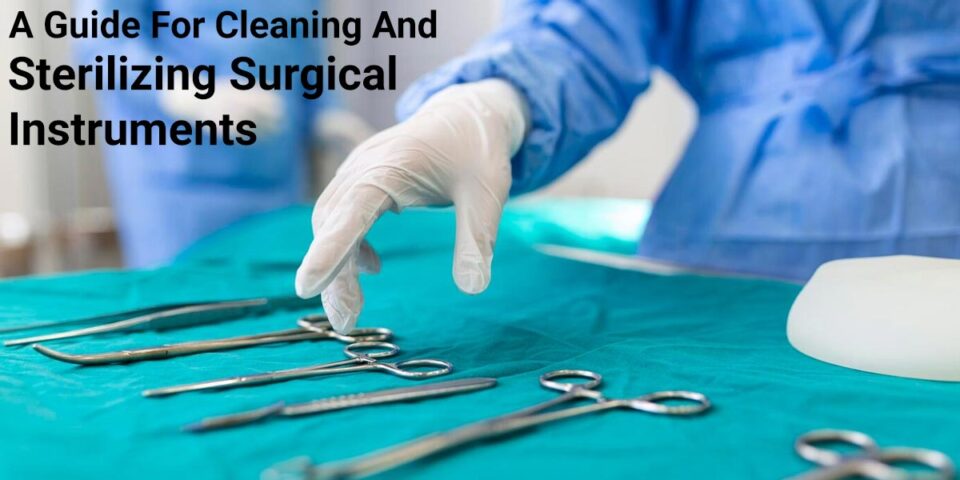A Guide For Cleaning And Sterilizing Surgical Instruments
Surgical instruments are the main part of a successful clinical procedure, and their cleanliness is important for patient safety. Cleaning properly and sterilizing these tools not only prevent infections but also make sure the tools don’t lose their toughness and functionality. This guide by R.L.Hansraj & co, the best surgical equipment manufacturers in Chennai, gives you a step-by-step procedure to efficiently cleanse and sterilize surgical tools, highlighting proper practices that each healthcare facility needs to know.
The Importance Of Cleaning And Sterilization
Before going into the cleaning procedure, it’s important to know why this process is needed. These instruments come into contact with bodily tissues making them carriers of infections. Even the slightest residue can lead to infection, putting patients in the line of possible infections. Moreover, unclean instruments can deteriorate quickly, leading to increased expenses for replacements and maintenance.
Immediate Post-Use Care
The cleansing process must start right away after the instruments are used. Allowing blood, tissue, and different natural tissues to dry on the tools could make cleaning more tough and increase the risk of corrosion.
- Pre-cleansing: Wipe the instruments with a sterile gauze or cloth to get rid of visible particles. This step prevents the build-up of organic matter.
- Immersing in a Detergent Solution: Place the devices in a box full of an enzymatic detergent solution. This step enables the breakdown of proteins and different organic matters. The solution needs to be prepared with the help of the manufacturer’s instructions. Our online surgical store offers a variety of instruments that meet the needs of modern medical practice.
Manual Cleaning
Manual cleansing is an important step that needs great attention to detail. This procedure guarantees that all natural and inorganic residues are removed before sterilization.
- Use a Soft Brush: Gently scrub each tool with a soft-bristled brush under flowing water. Pay special interest to hinges and other areas wherein particles can collect.
- Avoid Abrasive Materials: Do not use metal wool or other tough substances, as they may scratch the devices and create dents for microbes to hide.
- Rinse Thoroughly: After scrubbing, rinse the instruments below water to clean any final detergent and debris.
Ultrasonic Cleaning
Ultrasonic cleaning is an advanced method that makes use of high-frequency sound waves to clean equipment well. This step is very powerful for cleansing tools with complex designs and tough to reach areas.
- Prepare the Ultrasonic Cleaner: Fill the cleaner with the correct cleaning solution. Place the devices in the cleaner, making sure they are fully submerged and no longer touching each other.
- Run the Cycle: Turn the ultrasonic cleaner and allow it to run for the given time. This system will dislodge any final debris from the instruments.
- Rinse Again: After the ultrasonic cleansing, rinse the devices under flowing water to remove any last solution.
Inspection And Drying
After cleaning, each instrument should be cautiously inspected to make sure it’s free from debris and dust. This step is important for making sure that only absolutely functional tools are used in future.
- Inspect for Cleanliness: Use magnification if needed to check for any closing debris. Hinges and joints should move freely without resistance.
- Check for Damage: Look for any signs and symptoms of wear, rust, or harm. Instruments with defects must be repaired or changed.
- Drying: Dry the instruments thoroughly with the use of a lint-free cloth or an air dryer. Moisture left on the gadgets can lead to corrosion and compromise sterilization.
Sterilization
Once the devices are cleaned and dried, they are ready for sterilization. This is the very last step in making sure that the units are free from all types of microbes.
- Autoclaving: The most common method of sterilization is steam autoclaving. Place the devices in an autoclave, making sure that they are well organized to allow steam to penetrate all surfaces.
- Alternative Methods: Other sterilization methods include ethylene oxide fuel, hydrogen peroxide plasma, and chemical sterilization. The choice of method depends on the type of instruments.
The cleaning and sterilization of surgical gadgets are needed steps in healthcare that guard patient health and maintain the efficacy of surgical tools. By following the steps outlined in this manual, hospitals can uphold the best standards of cleanliness and protection, in the long run contributing to higher patient results. Regular learning and adherence to protocols are important to keeping those requirements and making sure that surgical gadgets are constantly prepared for use. For healthcare professionals looking to buy high quality surgical instruments online, we offer a reliable solution

